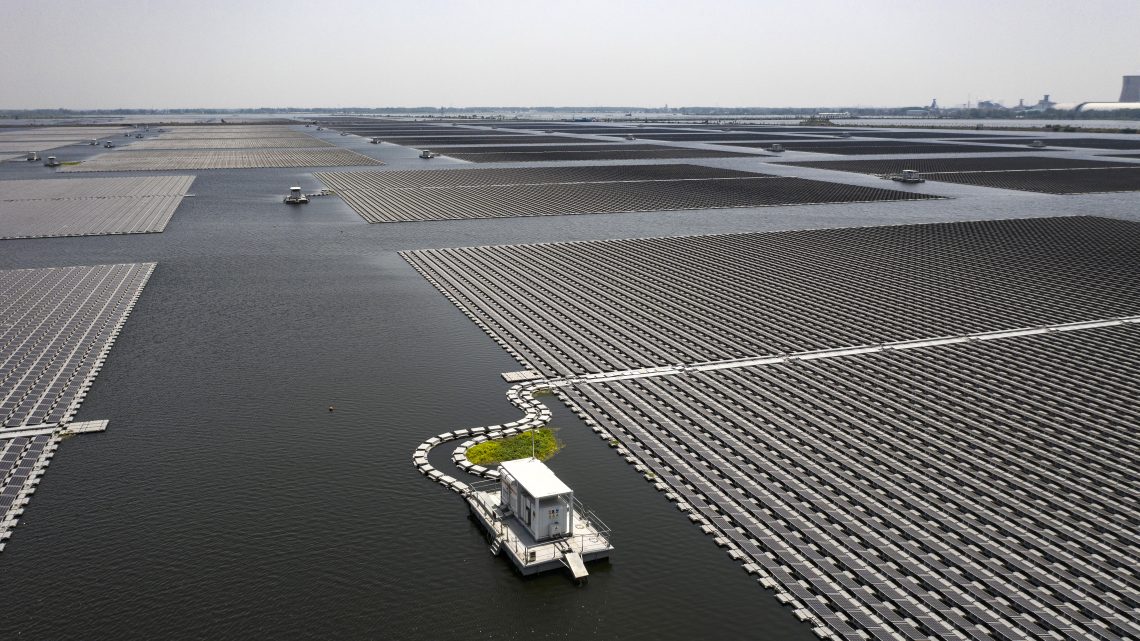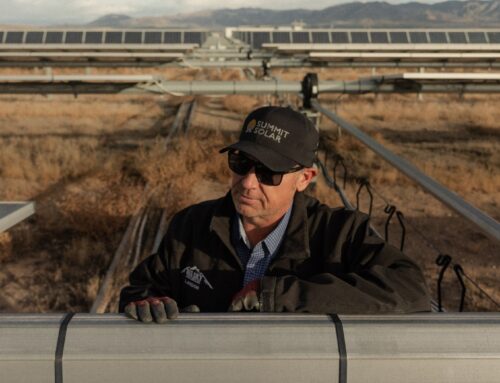Shifting priorities amid the energy transition
April 17, 2025

In a nutshell
- Governments prioritize energy security over sustainability
- Oil majors are reducing the tempo of investment into green energy
- Progress in the energy transition continues, hinges on predictable policies
Only until recently, the world seemed to be on a relentless drive toward replacing fossil fuels with green energy. The chief executives of major oil and gas companies announced bold plans to break away from their more than a century-old business model. While that momentum is not lost, it has been weakened.
In early 2020, then BP chief executive officer Bernard Looney set a radical target for the company: reducing oil and gas production by 40 percent by the end of the decade while significantly ramping up investments in renewables. The International Energy Agency (IEA), an authoritative voice on global energy, boldly stated in May 2021 that if the world is to reach net-zero emissions by 2050, then no new investment in fossil fuels should be undertaken beyond 2021.
The 2023 United Nations Climate Change Conference (COP28) in Dubai concluded with another spectacular announcement, hailing the “beginning of the end” of the fossil fuel era, as countries agreed to “drive the transition away from fossil fuels in energy systems, in a just, orderly and equitable manner.”
Then, following the biggest election year in history came 2025, with new governments in power in many countries. Some of those governments have been critical of the green movement, primarily emphasizing the economic cost of the energy transition and its threat to energy security.
The administration of President Donald Trump in the United States has been the most disruptive in that respect. On the day he took office, President Trump declared a national energy emergency, blaming his climate-friendly predecessor, Joe Biden, for “a precariously inadequate and intermittent energy supply, and an increasingly unreliable grid.” Also on that day, the U.S. announced its (re-) withdrawal from the 2015 Paris Agreement as the Trump administration strongly favors fossil fuels over green energy. The president himself said “We are going to ‘drill baby drill’ ” and “We’re not going to do the wind thing. Big, ugly windmills. They ruin your neighborhood.”
Fossil fuels have subsequently received a dramatic confidence boost. Amin Nasser, the CEO of Saudi Aramco, the world’s biggest oil-producing company, recently attacked “the fictions of the promised transition,” adding “there is an historic opportunity to change course.” Even the IEA’s chief, Dr. Fatih Birol, who over the last few years had been a fierce advocate of the energy transition, bluntly stated, “I want to be clear. There is a need for oil and gas upstream investments, full stop.”
Facts & figures
While the drastic change in advocacy is unmistakable, it is unlikely to result in a U-turn regarding the energy transition; that train has already left the station. The shift in preferences, which is the driving force behind the energy transition, has not been reversed. People’s Climate Vote, the world’s largest survey on climate awareness, recently found that more than half of people globally are more worried about climate change now than they were a year ago, and 80 percent want their countries to strengthen commitments to address climate change.
The global energy industry and governments the world over cannot and will not suddenly ignore those voices. We are therefore unlikely to see capital fleeing green energy. As demand continues to climb, especially in the developing world, in 2025 we are likely to see record investment in energy, particularly green energy, although it will grow at a slower pace than before. In summary: deceleration, not reversal.
What the world is trying to achieve today in terms of interfuel substitution − replacing polluting fuels with cleaner fuels regardless of efficiency − has not been done before. Despite this effort, fossil fuels – oil, coal and natural gas – still meet more than 80 percent of global primary energy demand. The remainder comes from renewable energy (15 percent, of which 6 percentage points come from hydropower) and nuclear (4 percent). To combat climate change, those proportions need to be drastically reversed and green energy will eventually have to dominate the energy mix. The interfuel substitution is happening, with renewable energy being the fastest-growing source of energy in at least the last decade (doubling from 7 percent to 14 percent between 2010 and 2023), but it is still growing from a low base.
Facts & figures
If history is any guide, structural changes to world energy consumption take many decades. Advances in technology can surely help, but here, government policies play a central role. The energy transition is not driven by a massive transformation of production processes (as was the case with the Industrial Revolution, which was fueled by coal), nor by competitiveness (as seen with oil versus coal). Today’s energy transition is driven by changes in preferences, and to that extent, government policies should provide the impetus for change.
‘Swinging from one extreme to another is not the right policy.’
In fact, if one looks at all the commonly cited energy outlooks, it can be easily seen that their core assumptions, scenarios and models are built around government policies. The IEA’s Stated Policies Scenario (STEPS) and the Announced Pledges Scenario (APS) are examples. This is also where the vulnerability of the energy transition resides, because as recent experience confirms, government policies are not cast in stone; they evolve. Problems arise when state policy suddenly and drastically changes, damaging investment confidence not only in one sector but across the board, adding to business risk and further dampening investment appetite.
Therefore, it was not surprising to hear the head of American energy firm Chevron, Mike Wirth, recently warn: “Swinging from one extreme to another is not the right policy.” An extreme scheme introduced by a new government to counter its predecessor’s policies is likely to be shelved by the successor, much like a swinging pendulum, impairing the stability investors seek.
At first sight, this year’s drastic policy upheaval appears to have already affected investment in both conventional and modern fuels, favoring capital allocation in the former at the expense of the latter.
In January this year, Shell wrote off a $1 billion investment in the Atlantic Shores wind project by coastal New Jersey in a move many attributed to the new anti-wind administration of Donald Trump. A month later, Norwegian state oil company Equinor lowered its 2030 target for renewable energy generation capacity and halved its investment in low-carbon projects to $5 billion through 2027 while it increased growth in oil and gas production expectations by 10 percent in the same period.
However, it was the British oil major BP that dominated the headlines when it introduced, also in February, “a fundamentally reset strategy, with significant capital reallocation, and plans to drive improved performance.” The reset manifests itself through a 20 percent increase in oil and gas investment to $10 billion per year, while slashing funding for renewables by more than $5 billion annually, or 70 percent, to $1.5-2 billion per year.
The reversals are swift and large and are a counterpoint to past decisions. BP, according to the company’s current CEO, Murray Auchincloss, went “too far, too fast” in the green energy transition.
While such moves can give the impression that the transition is failing as major energy companies dedicate an even smaller share of their capital to green initiatives, this masks fundamental facts. Chief among them is the simple reality that oil and gas can generate substantial economic rent to the industry unlikely to be matched by green energy projects in the foreseeable future.
Shareholders invest in such businesses in the hope of benefiting from lucrative returns. As Equinor’s chief executive Anders Opedal stated: “We are scaling down our investments in renewables and low carbon solutions because we don’t see the necessary profitability in the future.”
There is another fundamental difference between the nature and scale of investment in green energy versus oil and gas: the production profile of a typical oil and gas project. As a field is brought online, its output usually rises swiftly until it hits a maximum level – the peak or plateau, after which production starts to decline because of factors such as decreasing natural pressure in a given reservoir.
Companies, therefore, need to inject more capital to extend the plateau for as long as possible and then smooth the decline, stretching it for as long as possible before abandoning the field. Hence, investment in oil and gas is not only about the initial allocation of capital to start a new project; it is also about the ongoing injection of capital in an existing project and throughout its life, which can be quite substantial.
Facts & figures
- The U.S. is the only nation to have withdrawn from the Paris Agreement, and joins Iran, Libya and Yemen as the countries outside the pact.
- TotalEnergies aims for near-zero methane operated emissions in 2030.
- To meet the goals of the Paris Agreement, low-carbon spending will have to increase by 60% by 2030 (Wood Mackenzie).
- Record numbers of electric vehicles were sold in 2024, annual growth of 26% to 17.2 million units, approaching a quarter of all new car sales. EV sales grew at 60% and 34% in 2022 and 2023, respectively (Bloomberg).
- In 2015, the ratio of clean power to unabated fossil fuel power investments was roughly 2:1. In 2024, the ratio reached 10:1 (IEA).
- Rare earth elements (REEs) – a group of 17 critical metals – are indispensable components in military defense systems, consumer electronics and renewable energy technologies.
- The U.S. has the largest carbon capture, utilization and storage (CCUS) capacity in the world (41%).
While oil and gas companies allocate a significant proportion for upstream operations, a notable share goes to maximizing production from existing assets. Of the $400 billion invested annually in the industry, roughly $360 billion, or 90 percent, goes into offsetting the decline in existing fields, according to the IEA. Spending on exploration, which is the activity needed to discover new oil and gas fields, is relatively subdued, now only at half the levels of a decade ago, according to some estimates.
Despite changes in their investment strategies, oil and gas majors broadly remain committed to their net-zero targets. However, they are restructuring their portfolio by refocusing their attention on investment in technologies that are more complementary to their core business and that will keep them relevant in a greener world.
Those technologies include carbon capture and storage (CCS), which means CO2 that otherwise would be released into the atmosphere is captured and injected into geologic formations deep underground for permanent storage. An advanced iteration of CCS is called carbon capture, utilization and storage (CCUS), which goes a step further and utilizes the captured carbon in practical applications. The majors are also harnessing digitalization to reduce carbon intensity and greenhouse gas (GHG) footprints from their oil and gas operations.
Aramco’s CEO sums it up: “This does not mean stepping back from our global climate ambitions. Reducing GHG emissions must still get the highest possible priority. That means prioritizing technologies that drive efficiency, lower energy use, and further reduce GHG emissions from conventional energy. And AI will clearly be a game-changing enabler.”
Facts & figures
Looking at the entire energy sector, globally, total investment is expected to hit record levels this year, across all sources of energy. Power and renewables will continue to attract the largest share (more than 53 percent). Last year, there was almost twice as much global investment in clean energy as in fossil fuels, with investment in solar photovoltaic cells surpassing all other generation technologies combined. India, Pakistan, Romania, Saudi Arabia (the largest oil exporter in the world) and Turkey all posted more than 50 percent growth in solar installations in 2024.
This year, however, the rate of growth in total energy investment is projected to slow, with some expecting the rate to be half that of the early part of the decade. This is partly the result of capital discipline and ongoing policy uncertainties. In particular, slowing investment comes amid the new wave of tariffs hitting economies worldwide and the growing risk of trade wars and their negative effect on economic growth and energy demand.
In terms of regional distribution, investment remains imbalanced. The biggest spenders are China (the world’s largest emitter of CO2), the U.S. (the second-largest emitter of CO2) and the European Union – though China spends more than double the EU, and 170 percent more than the U.S. In clean energy, China’s lead is also clear (investing “just” $50 billion less than what the EU and the U.S. spend combined). However, other non-OECD countries account for only around 15 percent of global clean energy spending.
Interestingly, the Middle East, the world’s largest oil and gas producing region, is emerging as the fastest-growing renewables market outside China. That is in terms of added capacity, with the United Arab Emirates and Saudi Arabia leading the way with ambitious projects. However, the region is starting from a very low base (it is home to less than 1 percent of the world’s renewable capacity).
China’s influence on global energy investment goes beyond the traditional energy sphere, given its notable dominance in the production and especially the processing of metals and minerals crucial for the mining-intensive energy transition.
Facts & figures
When it comes to rare earth elements (REEs), China accounts for more than 70 percent of global production compared to the U.S.’s 14 percent, and it processes 85 percent of all REEs. It is also the leading producer of refined copper, lithium, cobalt, graphite and magnet rare earths, where it has a near monopoly (over 92 percent) over production. Magnet rare earths are essential components for wind energy. Chinese companies have also acquired sizeable stakes in the mining industry around the world. For instance, Chinese companies are major nickel mine owners in Indonesia, with around 40 percent of production, while Indonesian companies account for just 10 percent.
Beijing is also a major source of financing for projects around the globe that involve specific energy transition-relevant minerals, such as copper, cobalt, nickel, lithium and REEs. According to AidData, between 2000 and 2021, China extended $56.9 billion in aid and credit for “transition mineral” operations in at least 19 low- and middle-income countries. The global energy transition serves China’s economic interests and political ambitions; achieving climate targets is a bonus. The Asian powerhouse will do all it can to cement its central role in a greener world.
Scenarios
The growth in investment in the energy transition will continue but at a slower pace, following years of rapid acceleration. This year’s changes in the policy landscape in major economies and in strategies of energy producers will both contribute to increased capital discipline and portfolio restructuring. The overall trajectory of governments, industry and society working toward a cleaner world, however, will not be reversed and the energy transition will maintain its course, but perhaps with less vigor. That said, much more needs to be done to achieve net-zero by the middle of this century; if investment does not pick up significantly, many ambitious climate targets will be missed, with environmental consequences.
Despite the current market turmoil and policy uncertainty, it is unlikely that investors will lose interest or the obligation to continue in the energy transition and simply return their focus to financial returns, without regard to sustainability and environmental impact. With the energy transition less in focus, China’s stranglehold on REEs may become somewhat less pressing − although the materials will still be necessary for modern electronics and military technologies. In this scenario, there will be less immediate demand for these materials and there might also be a new wave of exploration for oil and gas, with new extraction projects coming online thereafter. This would lead to unavoidable, negative environmental impacts that nations worldwide will have to face in years to come.
Contact us today for tailored geopolitical insights and industry-specific advisory services.
Search
RECENT PRESS RELEASES
Related Post





